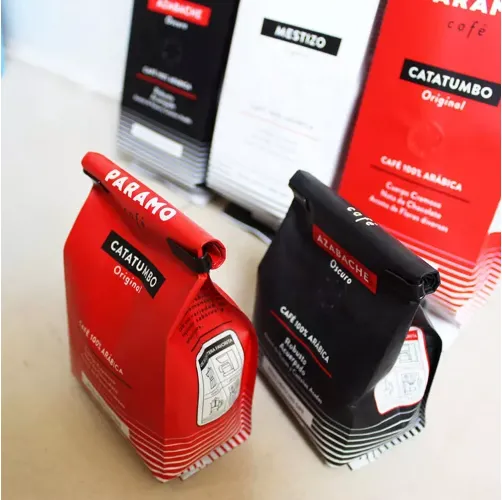Email: enid@bc-pak.com
Tel: 86-757- 88811186
- Afrikaans
- Albanian
- Amharic
- Arabic
- Armenian
- Azerbaijani
- Basque
- Belarusian
- Bengali
- Bosnian
- Bulgarian
- Catalan
- Cebuano
- chinese_simplified
- chinese_traditional
- Corsican
- Croatian
- Czech
- Danish
- Dutch
- English
- Esperanto
- Estonian
- Finnish
- French
- Frisian
- Galician
- Georgian
- German
- Greek
- Gujarati
- haitian_creole
- hausa
- hawaiian
- Hebrew
- Hindi
- Miao
- Hungarian
- Icelandic
- igbo
- Indonesian
- irish
- Italian
- Japanese
- Javanese
- Kannada
- kazakh
- Khmer
- Rwandese
- Korean
- Kurdish
- Kyrgyz
- Lao
- Latin
- Latvian
- Lithuanian
- Luxembourgish
- Macedonian
- Malgashi
- Malay
- Malayalam
- Maltese
- Maori
- Marathi
- Mongolian
- Myanmar
- Nepali
- Norwegian
- Norwegian
- Occitan
- Pashto
- Persian
- Polish
- Portuguese
- Punjabi
- Romanian
- Russian
- Samoan
- scottish-gaelic
- Serbian
- Sesotho
- Shona
- Sindhi
- Sinhala
- Slovak
- Slovenian
- Somali
- Spanish
- Sundanese
- Swahili
- Swedish
- Tagalog
- Tajik
- Tamil
- Tatar
- Telugu
- Thai
- Turkish
- Turkmen
- Ukrainian
- Urdu
- Uighur
- Uzbek
- Vietnamese
- Welsh
- Bantu
- Yiddish
- Yoruba
- Zulu
flexible food packaging
Views :
Update time : ಫೆಬ್ರ . 02, 2025 04:15
Crafting effective flexible food packaging solutions presents a remarkable intersection of innovation and preservation. As global food supply chains continue to expand, ensuring the longevity and safety of food products without compromising on sustainability has become imperative. Flexible food packaging has emerged as a dynamic solution to these challenges, primarily due to its ability to adapt, protect, and deliver a wide array of food products efficiently.
Moreover, flexibility in packaging goes beyond its physical properties. It extends into adaptability across various food products. Whether it’s fresh produce, dried snacks, or liquid beverages, flexible food packaging can be tailored to meet specific requirements. This adaptability facilitates a broader market reach and consumer trust, as companies can ensure product-specific protection that resonates with quality assurance standards. Crucially, the industry trusts flexible food packaging due to its proven track record of meeting safety regulations. Packaging must comply with rigorous standards to ensure that it doesn’t adversely affect the food content or the environment. Regulatory bodies such as the Food and Drug Administration (FDA) and the European Food Safety Authority (EFSA) have established comprehensive guidelines that flexible packaging must meet. Trustworthiness in this industry is anchored on such compliance, as it guarantees the packaged food’s safety for consumption. Finally, the continuous evolution of flexible food packaging technology echoes the dynamic nature of consumer expectations and environmental considerations. Companies are increasingly investing in recycling and upcycling technologies, ensuring that the life cycle of flexible materials contributes positively to circular economy models. Biodegradable and compostable materials are also being tested and integrated, providing sustainable alternatives without compromising the packaging's functional integrity. The journey towards embracing flexible food packaging involves not only understanding its current capabilities but also anticipating future innovations. As an industry, the goal remains to harmonize the benefits of flexible packaging with sustainable practices and consumer needs. In this thriving landscape, flexible food packaging not only preserves the quality of food but also paves the way for a more responsible and eco-friendly approach to food safety and distribution.


Moreover, flexibility in packaging goes beyond its physical properties. It extends into adaptability across various food products. Whether it’s fresh produce, dried snacks, or liquid beverages, flexible food packaging can be tailored to meet specific requirements. This adaptability facilitates a broader market reach and consumer trust, as companies can ensure product-specific protection that resonates with quality assurance standards. Crucially, the industry trusts flexible food packaging due to its proven track record of meeting safety regulations. Packaging must comply with rigorous standards to ensure that it doesn’t adversely affect the food content or the environment. Regulatory bodies such as the Food and Drug Administration (FDA) and the European Food Safety Authority (EFSA) have established comprehensive guidelines that flexible packaging must meet. Trustworthiness in this industry is anchored on such compliance, as it guarantees the packaged food’s safety for consumption. Finally, the continuous evolution of flexible food packaging technology echoes the dynamic nature of consumer expectations and environmental considerations. Companies are increasingly investing in recycling and upcycling technologies, ensuring that the life cycle of flexible materials contributes positively to circular economy models. Biodegradable and compostable materials are also being tested and integrated, providing sustainable alternatives without compromising the packaging's functional integrity. The journey towards embracing flexible food packaging involves not only understanding its current capabilities but also anticipating future innovations. As an industry, the goal remains to harmonize the benefits of flexible packaging with sustainable practices and consumer needs. In this thriving landscape, flexible food packaging not only preserves the quality of food but also paves the way for a more responsible and eco-friendly approach to food safety and distribution.
Recommend products
Read More >>
Related News
Read More >>













